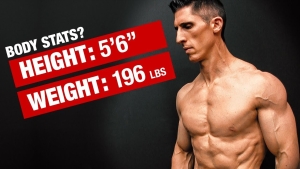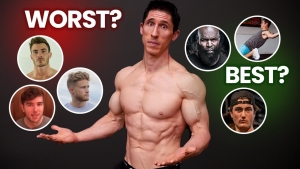
Now, don’t get me wrong…I’m no Nostradamus and I have no crystal ball that could have foreseen this taking place, but what I can tell you is that DVT’s or Deep Vein Thromboses are ironically quite common in athletes! That’s a scary scary thought! The fittest of the fit should NOT have to worry about a condition that is most commonly reserved for those that are immobile, frail, and deconditioned in a hospital bed.
There are plenty of reasons for this fact however, and knowing what might predispose an active individual to getting one of these potentially fatal clots could be just the information you need to be sure you DON’T get one. This is what I like to call the “IN CASE OF EMERGENCY” knowledge. It sort of falls right up there with the fire extinguisher! Hopefully you’ll never need to use one, but you damn sure better know how to use it if a five alarmer breaks out! Well, the same urgency would apply here.
What is DVT?
First a bit of information on what it actually is. A deep vein thrombosis or DVT is a clot that occurs in the deep peripheral veins of the body…most often in the lower legs or calves. It is most often caused by pooling or slowed blood flow in these areas that allows the blood to harden and clot as it essentially sits stagnant.
The symptoms when the clot resides in the calf area can include a sudden tightness, skin reddening and excessive warmth, and painful when it’s touched to name a few. But this isn’t even the worst of it. You see, if this clot dislodges and travels back through the venous system towards the lungs…it can turn into a pulmonary embolus (or lung clot) that can quickly and almost instantly kill you.
So WHY SERENA? And Why Athletes?? For quite a few reasons actually. The first is that well conditioned athletes normally have lower resting heart rates. We’ve all heard how this is a good thing for our overall health, and for the most part…it is. However, when the resting heart rate is so efficiently slow the effect is a slower blood flow rates throughout the rest of the body.
Slow down the rate of blood flow and the chances of pooling increase. Increase pooling and you’ve got the perfect storm for a DVT. The second interesting point is one of misdiagnosis. Take a look at those symptoms once again. Tightness, pain, cramping, soreness to the touch, etc. Couldn’t these all be present after a killer calf workout or a long bike ride? You betcha! And that’s a problem.
Recognize The Signs of DVT
Most often, athletes never even consider DVT when they begin to see these signs, since they usually just assume the normal muscle soreness is responsible. Don’t make this mistake. If you notice that these symptoms seem to appear out of nowhere, and the last time you can remember working your calves or riding a bike was in 4th grade when you pedaled over to your best friend Stevie’s house and played hopscotch….then you better get some medical attention!
Luckily, Serena had the help when she needed it. They identified this early enough and she will now undergo clot dissolving drugs and blood thinning therapy to gradually lower her risks of recurrence. The bottom line is…even though you may feel invincible at times by feeling like you’re in tip top shape, this very fact alone does not give you a hall pass to eternal health.
As I said, while the benefits of being in top shape will far outweigh the risks, it needs to be said that you still need to be aware of your body and the potential dangers that lurk and prey on the uninformed. Thought this would be a bit of an eye opener for you but at the same time would give you just the kind of information that makes you keep coming back to this blog in the first place. Let me know your thoughts or stories!
Stay Strong…
Jeff

Jeff Cavaliere M.S.P.T, CSCS
Jeff Cavaliere is a Physical Therapist, Strength Coach and creator of the ATHLEAN-X Training Programs and ATHLEAN-Rx Supplements. He has a Masters in Physical Therapy (MSPT) and has worked as Head Physical Therapist for the New York Mets, as well as training many elite professional athletes in Major League Baseball, NFL, MMA and professional wrestling. His programs produce “next level” achievements in muscle size, strength and performance for professional athletes and anyone looking to build a muscular athletic physique.


































